4 – The number of years in an Olympiad – simply the duration between Games – a standardised measurement of time introduced by the historian Ephorus. Prior to the widespread reference to the Olympiad, each state in ancient Greece was in the habit of using its own method to time measurement, a somewhat unworkable situation.
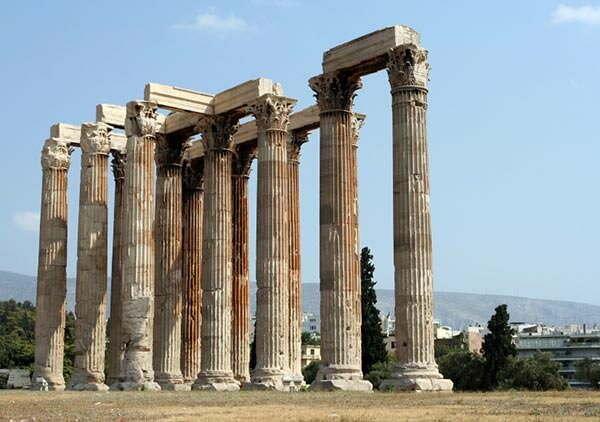
Above: Temple of the Olympian Zeus in Athens.
7 – There were Seven Ancient Wonders of the World, of which the Statue of Zeus was one; it was displayed in a temple in Olympia, the site of the Ancient Olympics.
2 – The number of major rituals central to life in ancient Greece. As well as the Olympic Games, ancient Greeks might also attend a ceremony called the Eleusinian Mysteries; this was an initiation ceremony for those joining the cult of Demeter and Persephone.
4 – The number of major sporting festivals held by the ancient Greeks, one in each year of the four-year cycle. Known as the Panhellenic Games, in running order they were –
The Pythian Games
Run every 4 years – held near Delphi and in honour of the god Apollo
The Nemean Games
Run every 2 years – held near Nemea and in honour of the god Zeus
The Isthmian Games
Run every 2 years – held near Corinth and in honour of the god Poseidon
The Olympic Games
Run every 4 years – held near Elis and in honour of the god Zeus
Of these four, the Olympic Games were the most significant, and of course, the only one of these to survive in modern times.
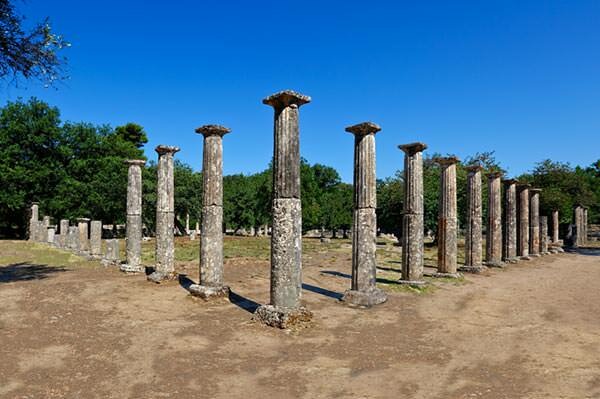
Above: Palaestra monument, Ancient Olympia.
5 – The number of days over which the ancient olympics were run. The first 3 days were given over to sports and the last two days to celebrations and rituals.
100 – The number of oxen killed on the first day of the olympics. Why? They were sacrificed to the god Zeus, in preparation for a feast held on the fifth and final day.
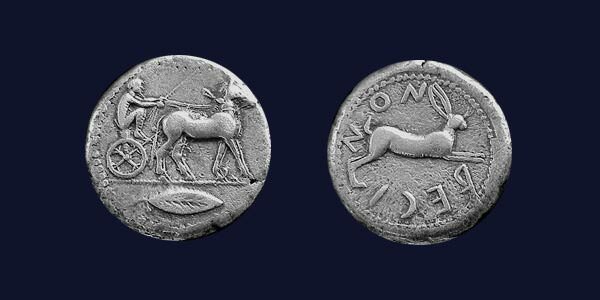
Above: Front and rear faces of a Bruttium, Rhegion coin dating from circa 478-476 BC. (Original image credit: Classical Numismatic Group, Inc.
0 – The number of married women you were likely to see at the original games. Whilst unmarried women were permitted within the Olympic grounds, any married woman caught in attendance would be sentenced to death! The likely influence on this law was that contestants would commonly compete naked. And the method of execution? Being thrown from the top of a cliff. Women were given their own games, a running event which occured during the festival of Heraea (held in honour of the goddess Hera).
5/6 – The length of the women’s running track compared to the men’s; the women’s track was 1/6th shorter because a women’s stride was measured to be 1/6th shorter than a man.
1 – The number of events at the original Games; the only competition was the “Stadion race”. The what? See below…
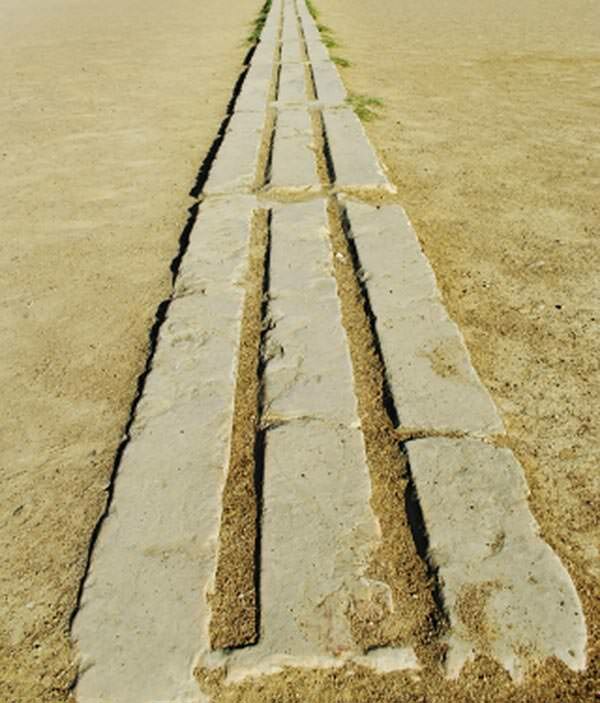
Above: Start line, Olympia.
192 – The distance, in metres, of the Stadion race (the origin of the modern English word “stadium”) – effectively the length of the ‘stade’.
20 – The number of runners in the Stadion race. They would start in a standing position with their arms outstretched in front.
0 – The likelihood of a draw being awarded in the original Stadion race. If a draw occurred, the race was re-run.
13 – The number of Olympic Games to occur before an additional event was added. For the 14th Games, a second Stadion race was added.
17 – The number of Games to occur before a non-running based event was added. For the 18th Games in 708 BC, wrestling (or “Pale”) was added.
0 – The number of rounds in the original boxing tournament (an event known as “Pygme” or “Pygmachia”). Rather than individual rounds, the fighters would keep going until one of them was knocked out. And if that took too long, the opponents had to resort to taking turns punching each other in the head, keeping on until one of them finally did fall. The Greek philosopher Plato poked fun at the boxers, referring to them as the “folk with the battered ears.”
2 – The number of rules in the ancient event of Pankration, a violent hand-to-hand fighting match in which opponents were only banned from two forms of attack; eye gouging and biting. These two rules were enforced by stick-weilding referees, but otherwise it was anything goes, no holds barred fighting, sometimes to the death but more commonly until an opponent lost consciousness or indicated their submission.
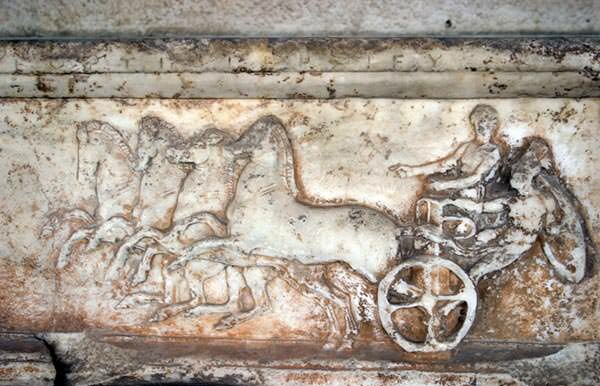
Above: Ancient Greek chariot race bas-relief.
9 – The length of a chariot race, in miles. Consisting of 12 laps of the stadium track, separate races were run for 2-horse and 4-horse chariots, as well as for chariots pulled by foals, and by pairs of mules.
4.5 – The length of a horse race, in miles. Separate 6 lap races were held for mares and foals.
150 – The approximate population of the village of Eleia in modern day Greece. Eleia was home to the earliest known victor in the ancient Games, the baker Coroebus (AKA ‘Koroibos’) of Elis, who won in 776 BC.
1200 – The approximate duration, in years, over which Olympic Games were recorded from the date of the first recorded event in 776 BC to their abolition in AD 393.

Above: Discobolus of Myron.
1500 – The longest gap between Olympic Games, in years. Whilst 4 years was and is the longest you have to wait between each games, prior to their resumption in 1896 you have to go all the way back to Theodosius I in AD 393, to the last time the olympics were run. Although the precise date is not certain, we do know that the ceremony was abandoned in order to establish Christianity as the de facto religion. Having conquered Greece, the Romans saw the Games as a pagan festival and a threat to the new state religion.